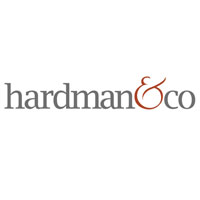Inland Homes PLC (LON:INL) is the topic of conversation when Hardman and Co Research Analyst Tony Williams caught up with DirectorsTalk for an exclusive interview
Q1: Tony, despite its name, Inland Homes is not a conventional UK housebuilder is it?
A1: No, it’s not in the strict sense, it’s a brownfield regeneration specialist which probably means you’re none the wiser. What this actually means is the company goes out and finds land which has been already used for another purpose i.e. it’s ‘brown’ and not ‘green’ field, but which has no on-going planning permission. It then buys the land either outright or through options and conditional contracts but the real alchemy, if you will, comes through its vision where it creates a master plan for the site or sites and then works very very closely with the local planning authorities to win planning permission. Once that’s brought forward then the sites realise its huge value and Inland is free to sell these sites to other housebuilders or in some cases actually develop them singularly or in joint venture.
I really think it’s an idea whose time’s come because if you look at the major housebuilders, the Bellway’s, the Barratt’s, they are all pushing the mantra, as I call it, of capital light. What that means is they’re trying to reduce the amount of cash that they have invested at any one time and what this does is obviously improve returns but also frees up real money, real cash, which a lot of them are paying out special dividends.
So, Inland is really helping this trend by bringing land which is then ‘oven-ready’ which the housebuilders can then buy, build extremely quickly and then sell quickly which again, helps their returns.
Q2: So, how much land does the Company have at any one time?
A2: At its last balance sheet date, it had nearly 7,000 plots and the vast majority of those are in the south and south east of England. It also has a bunch of strategic land and that runs at about 2,300 actual residential plots, this is spread across over 400 acres and these would typically have a 2-5-year time horizon. Ultimately, in the longer-term, what they would like is to hold a land bank at any one time of 10,000 plots.
Q3: And how land much did it sell last year?
A3: It sold nearly 800 plots last year across 10 sites and generated something around £50 million of revenue and it sold via disposals or joint ventures and so on. So, they’re knocking out 800 units a year, it’s quite a good clip for the business.
Q4: Now, you also said that Inland Homes actually build houses too?
A4: Yes, it does, and it does this for two reasons. First off, it’s very close to the market and when I said, ‘brings a site to planning’, it can look at it and say ‘we can make x if we sell it on or we can make y if we do it ourselves’, if that y is greater than the x they will go ahead and build houses themselves or in joint venture. The added benefit of that is that it keeps some sort of keen on the market because if they’re not out there building their own houses, what would happen is they would have no real perspective on the metrics that the other housebuilders are chasing.
So, there’s a double-edged sword here which obviously enhances returns but gives them the keenness to monitor the people, their major customers if you will. In the last fiscal year, it sold 188 units and as we came into the current fiscal year, up to June year-end, they had over 400 under construction.
Q5: Finally, I’d like to ask you about the Inland Homes PLC share price which I notice, at around 58p, is marginally lower than it was at the start of the year?
A5: That’s correct, it is much lower, a couple of percent lower than it was on Jan 1. I think this is really down to education, what investors like is they like to pigeon-hole companies and look at a standard list of metrics, housebuilding is a very simple business and it’s a very simple business to value.
To look at the company, you’ve got to do your homework, you’ve got to run around a bit, a lot of investors don’t spend the time, they’re lazy, they expect things to come their way, so you’ve got a challenge here to dig in and really find out what the company is doing because there’s only two or three companies in the country who are doing this.
The key to Inland is really asset value because its asset value really tells you what the land under their control is worth, once they’re through the planning process and it’s now ready to be sold. The simple equation really is to take their asset value, including this upward valuation on the land, and compare it to the share price and right now, you’re looking at a share price which is at a 40% discount to its asset value. This is clearly far too large, if you look at its peer group, people like Urban and Civic, they would be on single figure discounts to asset value.
I just really believe here that Inland have been overlooked, it’s doing some really good stuff and it needs just to be understand by the market. You do pick up the shares now and wait for that threshold to come forward, they are yielding almost 4% so it gives you some income near-term and what we believe, ultimately, capital growth on the share price will come.


